|
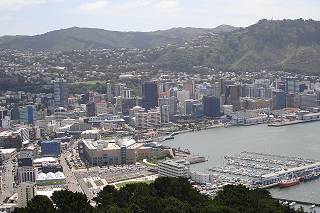
|
Wellington is the capital of New Zealand and a
magnificent city. It was named for Arthur Wellesley,
Duke of Wellington, famous as the victor in the
battle of Waterloo. It sits upon an excellent harbor
and our ship docked close to the city center. We
were able to walk into and around the city with
ease. Surrounded by mountains, it is called "Windy
Wellington" for good reason as the breezes sweep
across the harbor and into the city. |
|

|
Wellington became the capital in 1865. Today the
Parliament meets in the building to the right in
this picture, while the offices of the government
are located in the landmark building known as the
Beehive. |
|
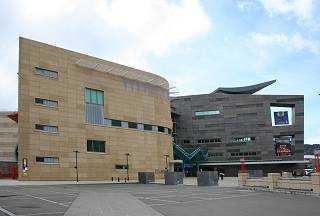
|
Our chief interest was the Te Papa museum. This is
truly a first-rate museum and is innovative in many
ways. The museum details the history of New Zealand
from ancient times to the present. It has many
interactive exhibits. It is also a marvel of
architecture and engineering. |
|
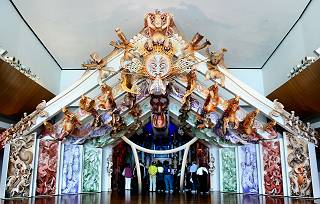
|
A
feature of the museum is this National Marae, a
colorful representation of the traditional Maori
meeting place.
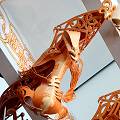 The
structure is both traditional and whimsical at the
same time. Various ceremonies of national importance
can be held in this special place. The
structure is both traditional and whimsical at the
same time. Various ceremonies of national importance
can be held in this special place. |
|
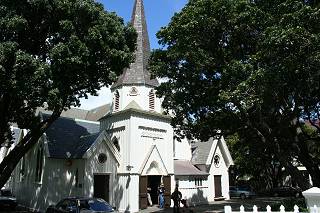
|
The first church
in Wellington was St. Paul's which is located near
the Parliament building. Originally Anglican, it is
today a non-denominational structure favored by
newly weds. As a guide inside said, "This is a fully
consecrated church for the whole nation." |
|
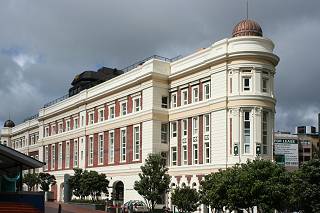
|
Wellington is a
busy, large city with a population nearing half a
million in the region. It is sophisticated, with a
fine shopping area. But it is also graceful,
preserving fine examples of buildings from an
earlier era. This building is found at the Queen's
Wharf, a place for exhibitions, cafes and pubs. |